Yoga for Back Pain Relief, 9 Best Poses
The ability to relieve back pain is one of the most common reasons people seek out yoga.
It’s no secret that yoga can help relieve aches and pains, but back pain seems to be one biggie in particular that people are interested in.
Back pain is often caused by a lack of mobility, and this is also related to hip problems. Make sure to check out our post on hip openers if you feel that this is also causing some of your problems.
If you have ever suffered from chronic back pain, soreness in the back, or you just feel like your back may need a reset button, then you’re in the right place!
Remember to take great care with your back and spine. Try to deepen the stretches over time as you become more flexible, but ease off any time you feel pain or serious discomfort.
Here’s to feeling young again!
This post may contain affiliate links, which helps keep this content free. Please read our disclosure for more info.
1. Half Lord of the Fishes Pose (Spinal Twist)
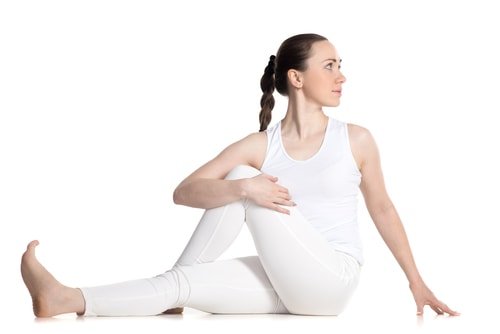
Twists are great for the back because they decompress the spine.
From a seated position, extend your right leg and place your left foot over your right thigh. Rest your right hand or forearm on your left knee, and gently twist to the left.
Place your left hand behind you for support. Remember to shift your gaze in the direction that you turn so as not to put any strain on the neck.
Take 3-4 deep breaths in this position, and repeat on the other side.
2. Cat Pose
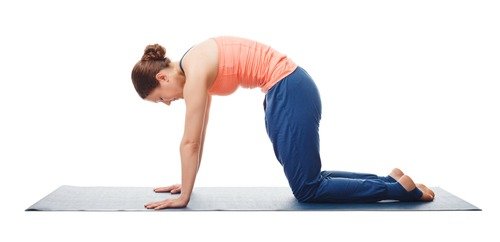
3. Cow Pose
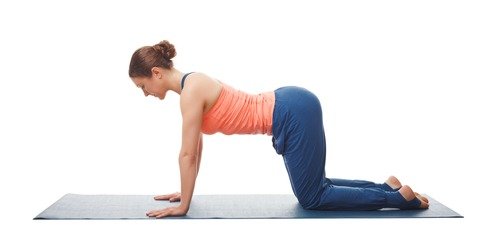
These poses are performed together as a “vinyasa” or “flow.” They are great for practicing your breathing and for warming up the back. They can be performed as a gentle warm-up or a more intense stretch, depending on how you are feeling.
From the tabletop position on your hands and knees, inhale and round the back. Imagine you have a rope around your stomach, pulling your stomach up towards the ceiling.
As you exhale, arch the back as deeply as you can and focus on pushing the glutes up towards the ceiling.
Perform this 5-6 times, and remember to breathe deeply through the stretches.
4. Cobra
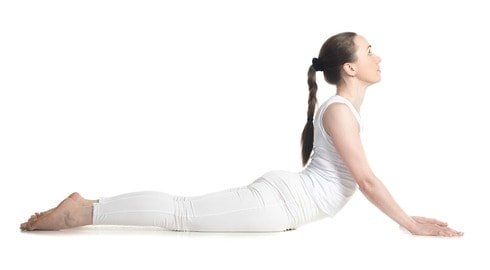
Cobra is also another pose that can be performed gently or more intensely, depending on what feels good on your body.
Lay face down on the floor with your hands next to your shoulders and your feet tucked under. Gently lift your shoulders and chest off the ground, using your upper back (try not to push too much with the hands). Focus on engaging your back muscles.
If this feels okay on your back, try lowering down slightly while keeping your hands light on the ground. In other words, try to stay lifted off of the ground using only your back muscles to hold yourself up.
This stretch can be intense, but it can also increase the flexibility and strength in your back.
Hold for 3-4 breaths, release and lower, and repeat again.
5. Half Forward Fold
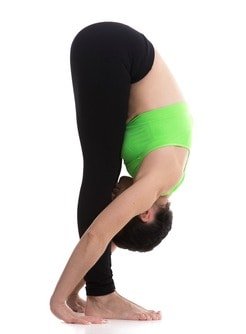
Besides increasing the flexibility in your hamstrings, this one is also great for the spine and the hips.
The key to this pose in relation to relieving tension and pain in the back is to RELAX.
Gently fold forward towards your toes. If you can’t touch your toes comfortably, just let your hands hang towards the floor.
Let your back be rounded and don’t worry too much about proper form in this pose. Just relax. Hold for 30 seconds if you can, and repeat 3x for best effects.
6. Downward Facing Dog
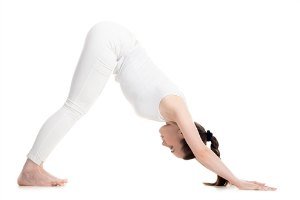
This pose works wonders the entire body, including the hamstrings, shoulders, arms, back, and chest. Try to practice it daily, if possible.
Your feet should be about a foot apart, and you can spread your fingers wide for support. You can also “pedal” into the feet, one at a time, to warm up in this stretch. Bring one heel up and then back down, and then repeat with the other foot.
If you feel comfortable enough, try bringing your head and chest further towards the ground to increase the stretch.
Hold for 10-30 seconds.
7. Thread the Needle
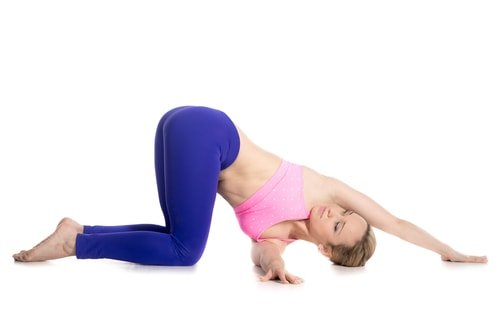
This pose is another twist, which makes it great for the back. It’s also great for the shoulders and chest.
Begin with your knees on the floor and your hands stretched out in front of you. Take your left hand, and “thread” it through (underneath) your right hand. Leave the left hand resting on the ground.
Bring your head through as far as you can, and lift your gaze up as high as you can to increase the stretch.
Take 3-4 deep breaths, and repeat on the other side.
8. Staff Pose
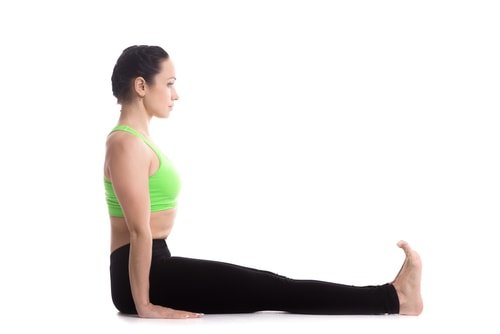
This pose is great for posture. Most people don’t realize how big of an impact posture can have on the health of the back. Improving your posture can help to drastically relieve back pain.
In this pose, you simply want to keep your back as straight as possible. Keep your toes pointed up or even slightly towards your body for support.
Try practicing this pose against the wall with your hands directly above your head to get used to the proper position. Hold for 30 seconds, and repeat 3x. Try to practice this one daily!
9. Child’s Pose
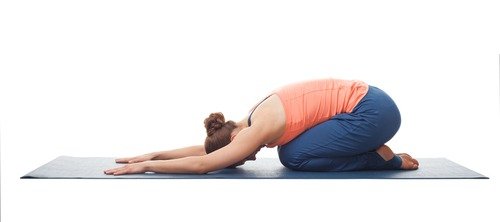
Lastly, we have Child’s pose. This is a rest pose in yoga, and it feels great on the back.
In this pose, focus on letting all of the tension seep out of your body. This is not an active pose, and you want your body to be as relaxed as possible.
Make sure to perform this pose after any intense poses on the back (such as cobra, upward facing dog, wheel, etc.), any other time you feel that you need it, and at the end of your practice.
If you are looking for a little more guidance on what poses are right for you and how to put them together for a practice, my Yoga Fat Loss Bible for Beginners would be a great place to start.
It comes with a complete flexibility guide that also has many beginner modifications to help you loosen up your muscles and relieve your aches and pains faster than ever!

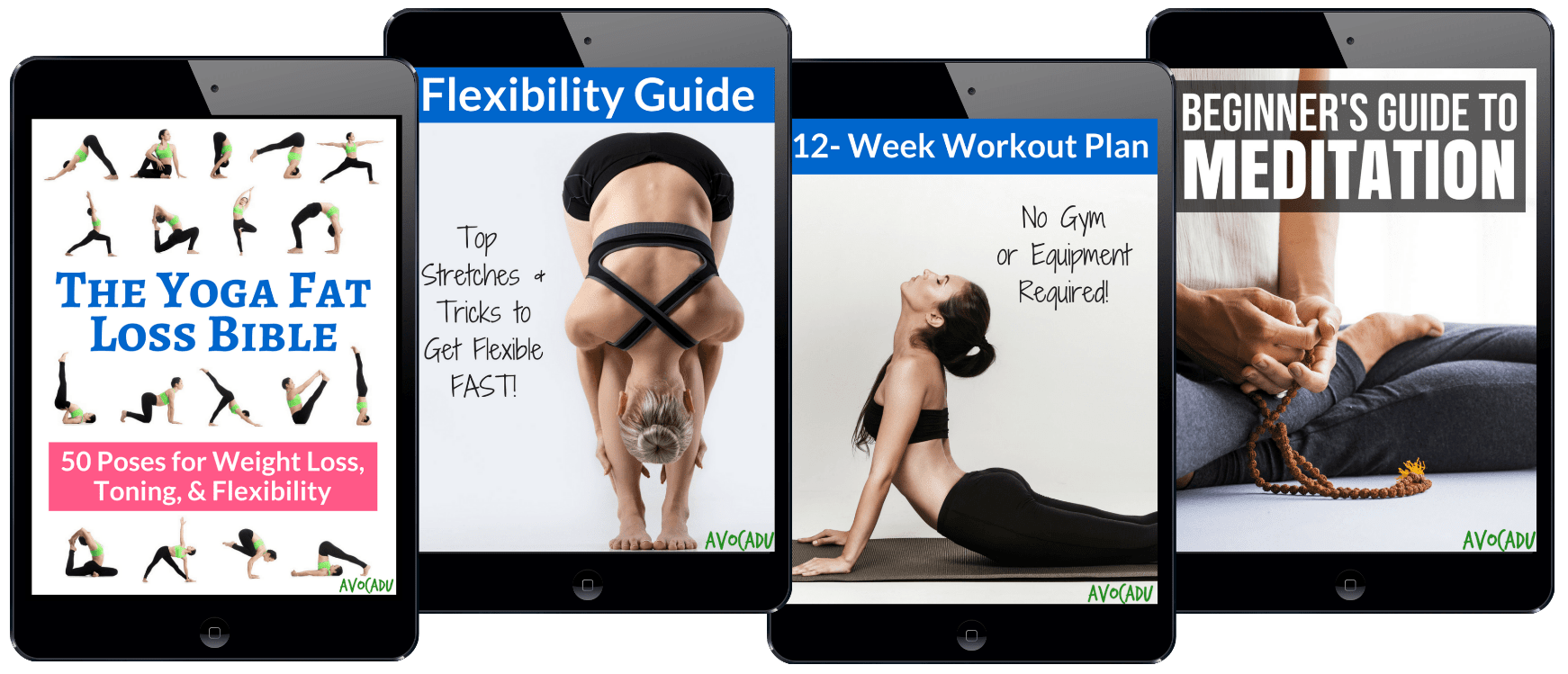
Got Instant relief from my bad backache. Thank u alot.
I have been suffering from back pains lately, and I desperately need to find a relief since it’s already affecting my overall health. Thanks for these yoga poses you suggested for back pain relief. I’ll be sure to try your tip to deepen my stretches over time as I become more flexible.